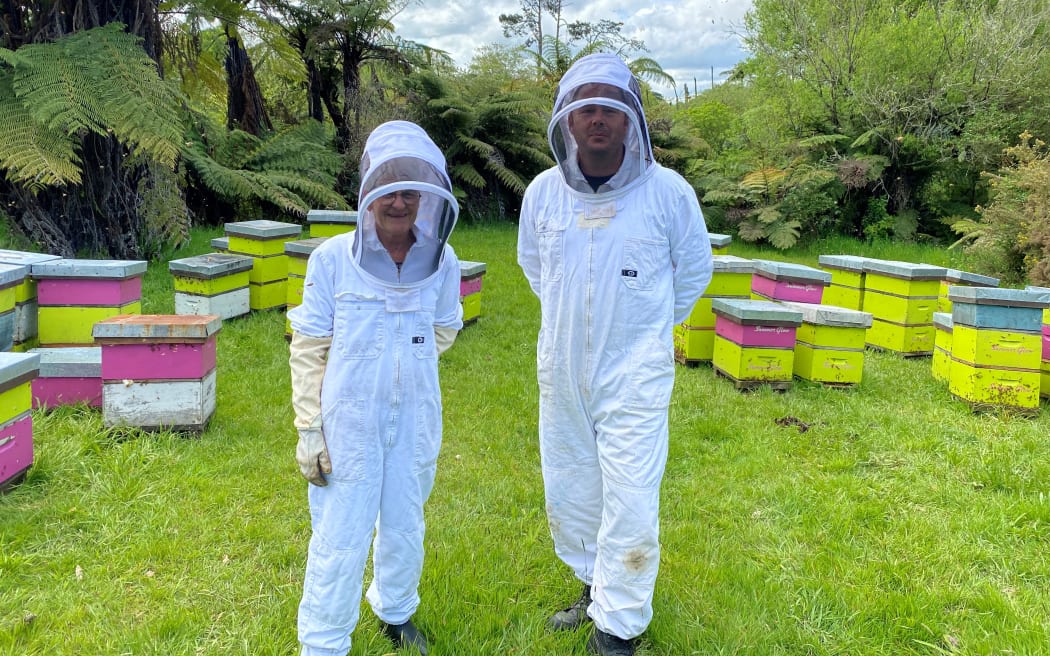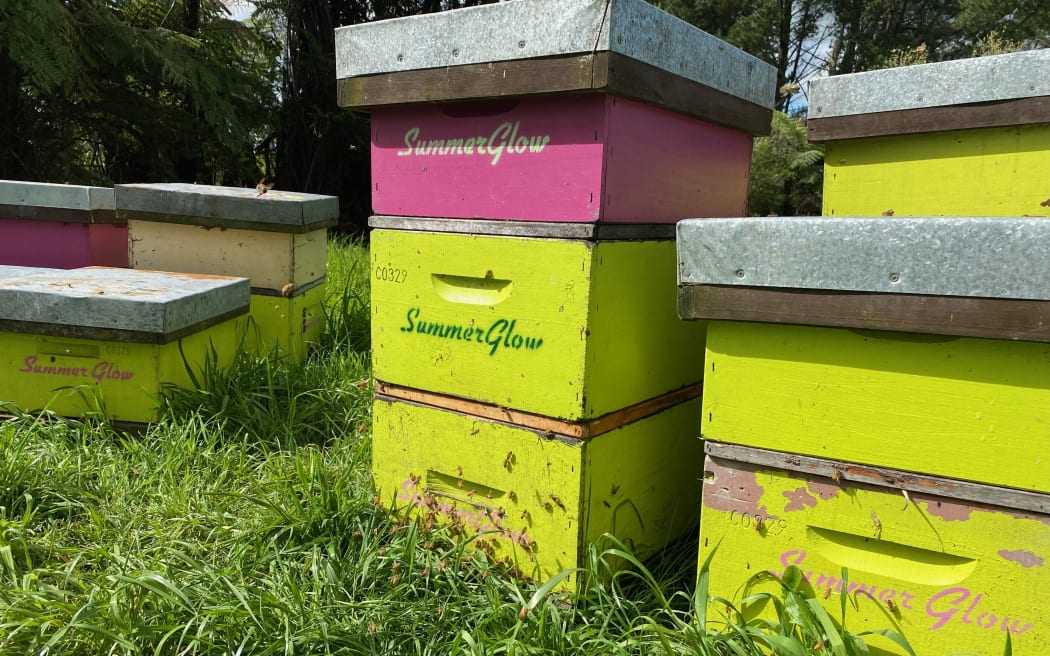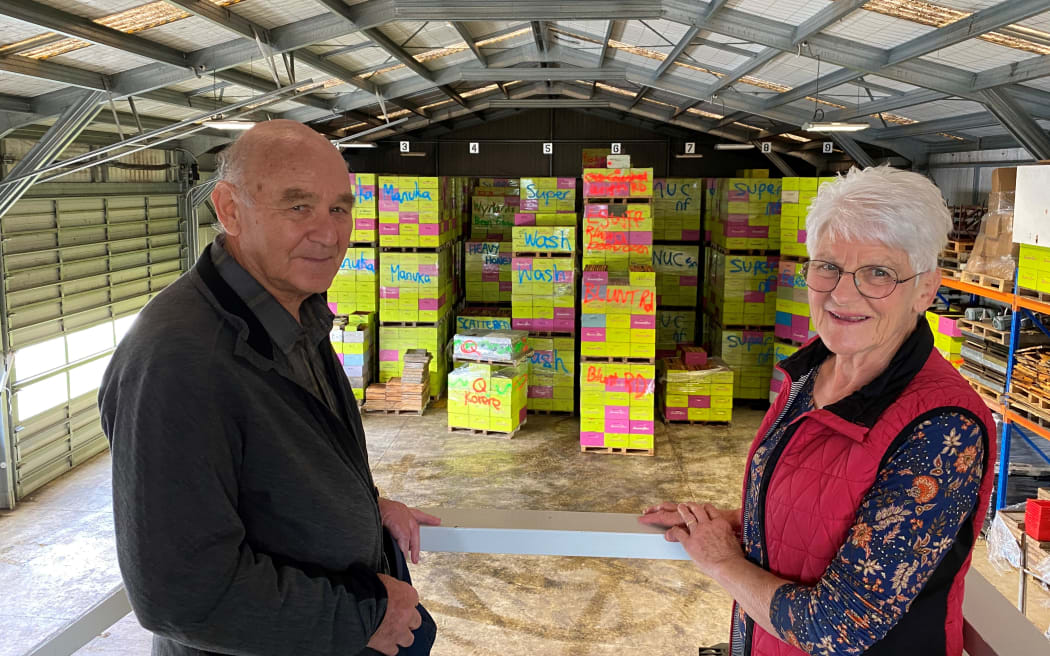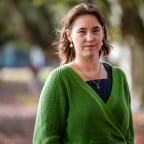Pioneering UMF: A beekeeper's story

Margaret Bennett (left) and son-in-law and beekeeper James Jeffery (right). Photo: RNZ/Leah Tebbutt
Being in the honey industry for 40-odd years is not enough for Margaret and her husband Bill Bennett.
"We hope we'll be some of the ones that keep on going through - that survive," Bill said as we enter the honey house with citrus and magenta-coloured hives piled high.
Their persistence and passion come as no surprise. The couple pioneered the UMF grading system 25 years ago and they have campaigned for it ever since.
And while they are taking a small step back, son Andrew and son-in-law James Jeffery are both now beekeepers for their business, SummerGlow Apiaries.
Listen to the full interview here: Listen Now
The couple started beekeeping in 1976. Bill had inherited his love for bees from his uncle, who was also a beekeeper.
In the early 1980's research from Dr Peter Molan stated the medicinal benefits of mānuka Honey. It was something Bill could easily accept as his uncle had the same beliefs, Margaret said.
"We produced a bit of mānuka honey and we had it tested and found it had the health-giving attributes that are unique to mānuka honey and thought 'oh this is great'."
And that's where the real story begins.
After some financial difficulty, the couple decided to sell the honey themselves.
"But we are beekeepers, we don't know anything about marketing at all," Margaret said.
So off they went for a meeting with TradeNZ, the predecessor of Trade and Enterprise New Zealand. After talking, two further meetings were called with all in the industry to name and set standards for mānuka honey.

Summer Glow hives buzzing with activity. Photo: RNZ/Leah Tebbutt
Margaret said that it would ensure the consumer knew what they were buying - "the real McCoy".
"A few years later when the name UMF was devised ... it became known as the UMF Honey Association."
Standing for unique mānuka factor, Margaret said the naming came from Dr Peter Molan himself.
"He was at a cafe outside and the sun was beaming down on his head, and his head is like Bill's, with no hair.
"And he jokingly said I need some sunscreen on there - SPF, UMF, they had it."
From 2002 until this year, Margaret held a position on the association's board, only stepping down due to age, hoping some new blood would come in.
"I still have a very good relationship with the board so I say I'm still niggling in the background just to see it's still heading in the direction."

Bill (left) and Margaret Bennett (right) stand at the top of their bee house with empty hives stacked high ready to go for summer. Photo: RNZ/Leah Tebbutt
Margaret said she would like to see mānuka viewed as a nutraceutical product, and away from a food product.
"What we need is good outcome research into what the honey can do for the consumer. Once you do that, the consumer is giving a reason to want to buy the honey, that's not just a number, not just a name."
They have more than 3500 beehives located in the greater Waikato region, in the pristine bush areas of the northern King Country and in the remote Forgotten World region of North Taranaki.








